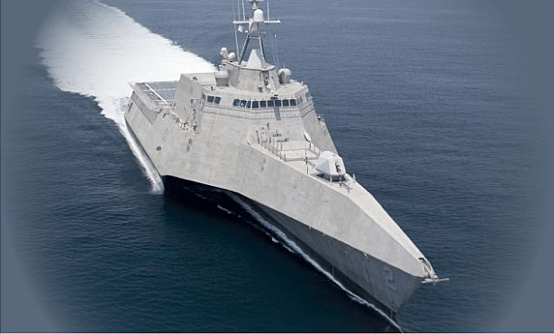The USS Miami on March 15th as it enters dry dock to begin an engineered overhaul at Portsmouth Naval Shipyard. (U.S. Navy photo)
With Congress failing to act to prevent sequestration, the president signed the cuts into law at 11:59pm on March 1. While we’ve been warned of the ‘doomsday scenario,’ what exactly does sequestration mean and- more importantly- how will it affect the maritime industry?
The Navy was long held to be the “safest” of the services from DoD cuts due to its ongoing role in maritime security and ensuring freedom of the seas, while the Army and Marines are reducing their footprint abroad after a decade of war. With the administration’s “rebalance to Asia,” the Navy was in a prime position to rise out of the shadows of land-based forces as the new national security message looked to the sea.
Yet Secretary of the Navy Mabus’ announcement today highlighted the devastating impact facing our maritime forces.
Certainly, there may be some dramatizing for political posturing, but the bottom line is the cuts announced will cripple the fleet and greatly reduce operational capabilities. Not only will USN ships and aircraft be grounded, but this will impact those whose livelihood depends on the maintenance and support of ships and aircraft.
Sequestration implements an across-the-board cut of all Pentagon accounts (with military pay being the only exemption) by 7.8% from planned full-year levels, according to the Office of Management and Budget. However, the defense cuts have effectively become 13% because they must take effect in the remaining seven months of the fiscal year.
Shipyards will be especially hard-hit. Third and fourth quarter depot level maintenance has effectively been canceled for ships and aircraft. NASSCO and BAE Systems have already announced they intend to lay off thousands of workers as Navy cuts take effect.
Maintenance has already been postponed for the refueling of the nuclear powered aircraft carrier USS Abraham Lincoln, effectively reducing the carrier fleet by one for an indefinite period and delaying a major overhaul priced at $3.3B. Repairs on the sub USS Miami (following a devastating arson fire projected to cost +400 million to repair) and ship USS Porter (following a collision with a tanker near the Strait of Hormuz) will be deferred, resulting in both a loss of those assets for the Navy and lack of repair work for shipyards.
Those building ships will be impacted as new build orders are delayed or cancelled, especially impacting the Virginia-class SSN advance procurement and Joint High Speed vessel (JHSV 10). Research and development will be slashed, with a reduction of investment in ships, aircraft, weapons, R&D by $7.75B.
Even deploying units aren’t safe. Up to six ships will find their April deployments cancelled or deferred. The USS Harry S Truman and escort recently had their deployments postponed. Ships already on deployment- the USS Shoup and USS Thatch- have been ordered home early. The humanitarian deployment to Central and South America by the USNS Comfort, along with support ships, Seabees and attached medical units, have also been deferred.
While the cancellation of Blue Angels air shows may seem trivial, Secretary Mabus also announced plans to shut down a Carrier Air Wing in April and a subsequent stand-down of flying in at least three additional air wings.
Civilian furloughs and hiring freezes will also become standard practice for the foreseeable future, creating a potential exodus of talent from government jobs into the civilian sector, which will be struggling to keep their own employees occupied.
There are other concerns stemming from sequestration which are hard to quantify. US global naval presence will be reduced, which may embolden pirates just as we’re witnessing an ebb in attacks on merchants. Providing freedom of the seas, a core navy mission, will become more challenging.
Critical skills and capabilities at shipyards may be in danger as yards see less work and workers are forced to search elsewhere for employment. The challenges of idling or even closing a shipyard must be considered as the DoD seeks to preserve the industrial base.
While sequestration doesn’t mean doomsday has arrived, it will require a very serious analysis by those in the industry on how to survive given the massive reduction of spending by the US government. Many have already been planning, looking to diversify outside the military industrial base where possible and turning to international venues.
The adversity and challenges of sequestration will have a very serious impact on our maritime industry, though ultimately it may prove helpful in identifying inefficiencies and reducing waste. Given the increasingly diminishing chance that Congress will work together to prevent cuts from devastating the military budget, I certainly hope so.
Update: Apparently sequestration has had no affect on the Navy’s commitment to the $37 billion Littoral Combat Ship program, because the Pentagon on Monday announced orders for four new ships totaling more than $1.3 billion.
Written by an anonymous gCaptain contributor.

 Join The Club
Join The Club











